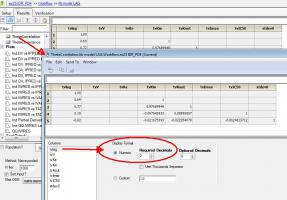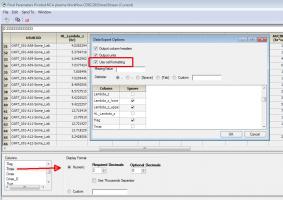Simon: I have Excel 2007. Here is what I did do. I consider Tmax and lambda paramaters.
I went to final parameters pivoted Table in Phoenix and I set Tmax to 2 decimals and the lamba to 4 decimals and it adjusts in the final paramaters Table. You see the 2 and the 4 decimals for these paramaters within Phoenix.
When you export into Excel as a CSV file (using your settings) then for example what you what you get for Tmax is 17.05 and 13. The lambda is 4 decimals as stipulated within Phoenix
In other word the process of entering the Excel environment results in values changed from 13.00 (in Phoenix) to 13.
If you send your data to Table with Phoenix and then export to Excel (righy mouse click) then you get the saem results. The problem is Excel truncates off from 13.00 to 13.
Any thoughts,
Angus

















